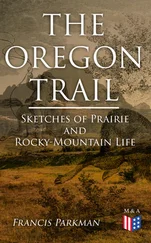Rachel Busk - The Valleys of Tirol - Their traditions and customs and how to visit them
Здесь есть возможность читать онлайн «Rachel Busk - The Valleys of Tirol - Their traditions and customs and how to visit them» — ознакомительный отрывок электронной книги совершенно бесплатно, а после прочтения отрывка купить полную версию. В некоторых случаях можно слушать аудио, скачать через торрент в формате fb2 и присутствует краткое содержание. Жанр: foreign_antique, foreign_prose, Путешествия и география, на английском языке. Описание произведения, (предисловие) а так же отзывы посетителей доступны на портале библиотеки ЛибКат.
- Название:The Valleys of Tirol: Their traditions and customs and how to visit them
- Автор:
- Жанр:
- Год:неизвестен
- ISBN:нет данных
- Рейтинг книги:3 / 5. Голосов: 1
-
Избранное:Добавить в избранное
- Отзывы:
-
Ваша оценка:
- 60
- 1
- 2
- 3
- 4
- 5
The Valleys of Tirol: Their traditions and customs and how to visit them: краткое содержание, описание и аннотация
Предлагаем к чтению аннотацию, описание, краткое содержание или предисловие (зависит от того, что написал сам автор книги «The Valleys of Tirol: Their traditions and customs and how to visit them»). Если вы не нашли необходимую информацию о книге — напишите в комментариях, мы постараемся отыскать её.
The Valleys of Tirol: Their traditions and customs and how to visit them — читать онлайн ознакомительный отрывок
Ниже представлен текст книги, разбитый по страницам. Система сохранения места последней прочитанной страницы, позволяет с удобством читать онлайн бесплатно книгу «The Valleys of Tirol: Their traditions and customs and how to visit them», без необходимости каждый раз заново искать на чём Вы остановились. Поставьте закладку, и сможете в любой момент перейти на страницу, на которой закончили чтение.
Интервал:
Закладка:
Imst was formerly celebrated for its breed of canary-birds, which its townsmen used to carry all over Europe. The church contains a votive tablet, put up by some of them on occasion of being saved from shipwreck in the Mediterranean. It has a good old inn, once a knightly palace. From Imst the Pitzthal branches southwards; but concerning it I have not space to enlarge, as the more interesting excursion to Füssen, on the Bavarian frontier, must not be passed over. The pleasantest way of making this excursion is to engage a carriage for the whole distance at Imst, but a diligence or ‘Eilwagen,’ running daily between Innsbruck and Füssen, may be met at Nassereit, some three miles along the Gunglthal. At Nassereit I will pause a moment to mention a circumstance, bearing on the question of the formation of legends, which seemed to take considerable hold on the people, and was narrated to me with a manifest impression of belief in the supernatural. There was a pilgrimage from a place called Biberwier to a shrine of the Virgin, at Dormiz, on August 10, 1869. It was to gain the indulgence of the Vatican Council, and the priest of Biberwier in exhorting his people to treat it entirely as a matter of penance, and not as a party of pleasure, had made use of a figure of speech bidding them not to trust themselves to the bark of worldly pleasure, for, he assured them, it had many holes in it, and would swamp them instead of bearing them on to the joys of heaven. Four of the men, however, persisted in disregarding his warning, and in combining a trip to the Fernsee, one of two romantically situated mountain lakes overlooked by the ancient castle of Sigmundsburg, on a promontory running into it and with its Wirthshaus ‘auf dem Fern’ forming a favourite though difficult pleasure-excursion. The weather was treacherous; the boat was swamped in the squall which ensued, and all four men were drowned. From Nassereit also is generally made the ascent of the Tschirgants, the peak which has constantly formed a remarkable feature in the landscape all the way from Arlberg.
The road to Füssen passes by Sigmundsburg, Fernsee and Biberwier mentioned in the preceding narrative also the beautiful Blendsee and Mittersee (accessible only to the pedestrian) or rather the by-paths leading to them. Leermoos is the next place passed, – a straggling, inconsiderable hamlet, but affording a pleasing incident in the landscape, when, after passing it, the steep road winds back upon it and reveals it again far far below you. It is, however, quite possible to put up for a night with the accommodation afforded by the Post inn, and by this means one of the most justly celebrated natural beauties may be enjoyed, in the sunset effects produced by the lighting up of the Zugspitzwand.
Next is Lähn, whose situation disposes one to believe the tradition that it has its name from the avalanches ( Lawinen , locally contracted into Lähne) by which the valley is frequently visited, and chiefly from a terrible one, in the fifteenth century, which destroyed the village, till then called Mitterwald. A carrier who had been wont to pass that way, struck with compassion at the desolation of the place, aided in providing the surviving inhabitants to rebuild their chapel, and tradition fables of him that they were aided by an angel. The road opens out once more as we approach Heiterwang; there is also a post-road hence to Ammergau; here, a small party may put up at the Rossl, for the sake of visiting the Plansee, the second largest lake of Tirol, on the right (east) of the road; on the left is the opening of the Lechthal, a difficult excursion even to the most practised pedestrian. For those who study convenience the Plansee may be better visited from Reutte.
After Heiterwang the rocks close in again on the road as we pass through the Ehrenberger Klause, celebrated again and again through the pages of Tirolese history, from the very earliest times, for heroic defences; its castle is an important and beautiful ruin; and so the road proceeds to Reutte, Füssen, and the much visited Lustschloss of Schwangau; but as these are in Bavaria I must not occupy my Tirolese pages with them, but mention only the Mangtritt, the boundary pass, where a cross stands out boldly against the sky, in memory of S. Magnus, the apostle of these valleys. The devil, furious at the success of the saint with his conversion of the heathen inhabitants, sent a tribe of wild and evil men, says one version of the legend, a formidable dragon according to another, to exterminate him; he was thus driven to the narrow glen where the fine post-road now runs between the rocks beside the roaring Lech. Nothing daunted, the saint sprang across to the opposite rock whither his adversaries, who had no guardian angels’ wings to ‘bear them up’, durst not pursue him; it is a curious fact for the comparative mythologist that the same pass bears also the name of Jusulte (Saltus Julii) and the tradition that Julius Cæsar performed a similar feat here on horseback. Near it is a poor little inn, called ‘the White House,’ where local vintages may be tasted.
Reutte has two inns; the Post and Krone , and from it more excursions may be made than I have space to chronicle. That to Breitenwang is an easy one; a house here is pointed out as having been built on the spot where stood a poor hut which gave shelter in his last moments to Lothair II. ‘the Saxon’ overtaken by death on his return journey from the war in Italy, 1137; what remained of the old materials having been conscientiously worked into the building, down to the most insignificant spar; a tablet records the event. The church, a Benedictine foundation of the twelfth century, was rebuilt in the seventeenth, and contains many specimens of what Tirolese artists can do in sculpture, wood-carving, and painting. A quaint chapel in the churchyard has a representation in stucco of the ‘Dance of Death.’
The country between this and the Plansee is called the Achenthal, fortunately distinguished by local mispronounciation as the Archenthal from the better known (though not deservingly so) Achenthal, which we shall visit later. The Ache or Arche affords several water-falls, the most important of them, the Stuibfall, is nearly a hundred feet in height, and on a bright evening a beautiful ‘iris’ may be seen enthroned in its foam.
At the easternmost extremity of the Plansee, to be reached either by pleasure boat or mountain path, near the little border custom-house, the Kaiser-brunnen flows into the lake, so called because its cool waters once afforded a refreshing drink to Ludwig of Brandenberg, when out hunting: a crucifix marks the spot. There is also a chapel erected at the end of the 17th century, in consequence of some local vow, containing a picture of the ‘Vierzehn Nothhelfer;’ and as the so-called ‘Fourteen Helpers in Need’ are a favourite devotion all over North-Tirol I may as well mention their legend here at our first time of meeting them. The story is that on the feast of the Invention of the Cross, 1445, a shepherd-boy named Hermann, serving the Cistercian monks of Langheim (some thirty miles south of Mayence) was keeping sheep on a farm belonging to them in Frankenthal not far from Würtzburg, when he heard a child’s voice crying to him out of the long grass; he turned round and saw a beautiful infant with two tapers burning before it, who disappeared as he approached. On the vigil of S. Peter in the following year Hermann saw the same vision repeated, only this time the beautiful infant was surrounded by a court of fourteen other children, who told him they were the ‘Vierzehn Nothelfer,’ and that he was to build a chapel to them. The monks refused to believe Hermann’s story, but the popular mind connected it with a devotion which was already widespread, and by the year 1448 the mysteriously ordered chapel was raised, and speedily became a place of pilgrimage. This chapel has been constantly maintained and enlarged and has now grown into a considerable church; and the devotion to the ‘Fourteen Helpers in Need’ spread over the surrounding country with the usual rapid spread of a popular devotion. 39The chief remaining points of interest in the further journey to Innsbruck, taking it up where we diverged from it at Nassereit, are mentioned later in my excursions for Innsbruck.
Читать дальшеИнтервал:
Закладка:
Похожие книги на «The Valleys of Tirol: Their traditions and customs and how to visit them»
Представляем Вашему вниманию похожие книги на «The Valleys of Tirol: Their traditions and customs and how to visit them» списком для выбора. Мы отобрали схожую по названию и смыслу литературу в надежде предоставить читателям больше вариантов отыскать новые, интересные, ещё непрочитанные произведения.
Обсуждение, отзывы о книге «The Valleys of Tirol: Their traditions and customs and how to visit them» и просто собственные мнения читателей. Оставьте ваши комментарии, напишите, что Вы думаете о произведении, его смысле или главных героях. Укажите что конкретно понравилось, а что нет, и почему Вы так считаете.












